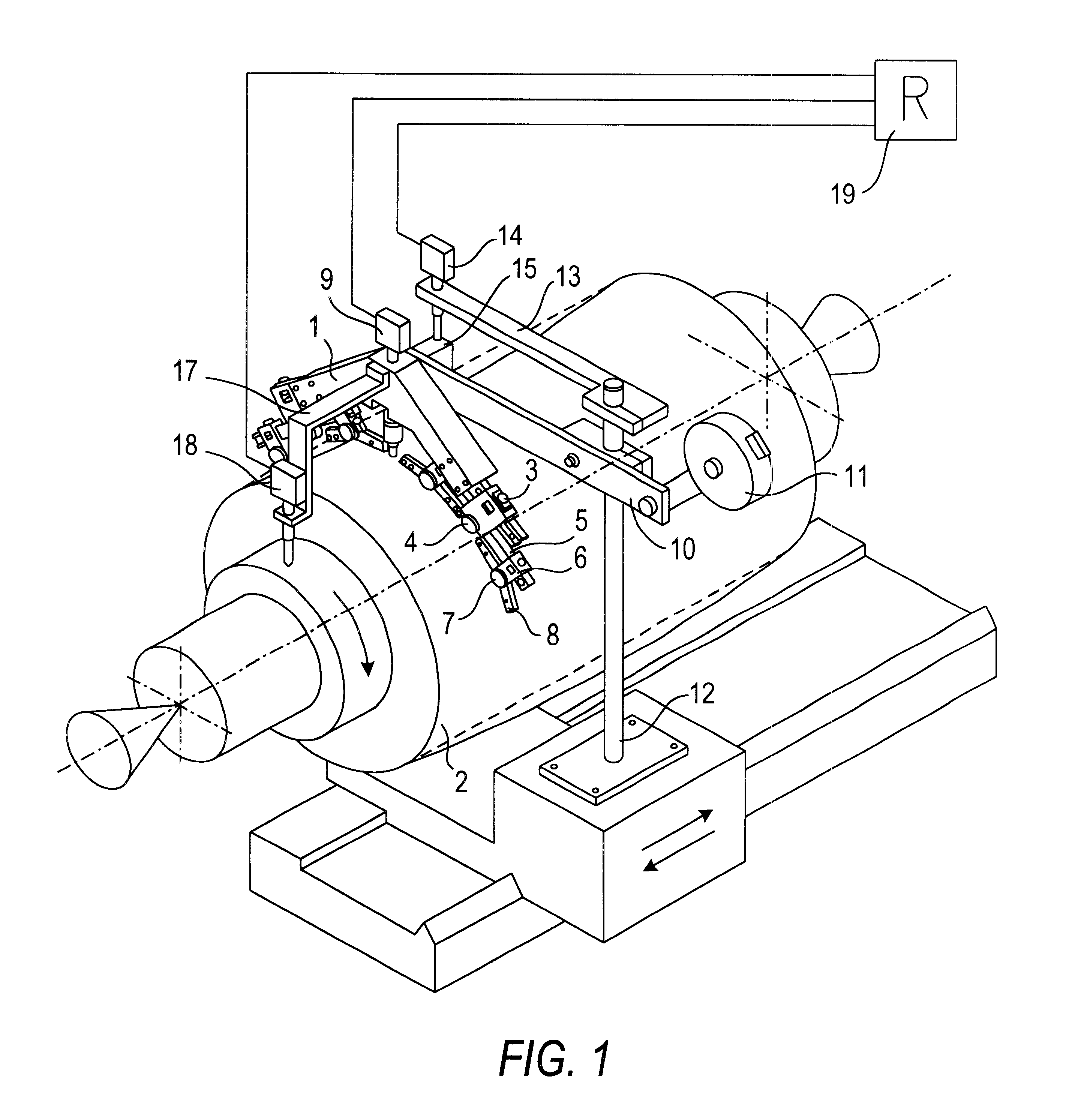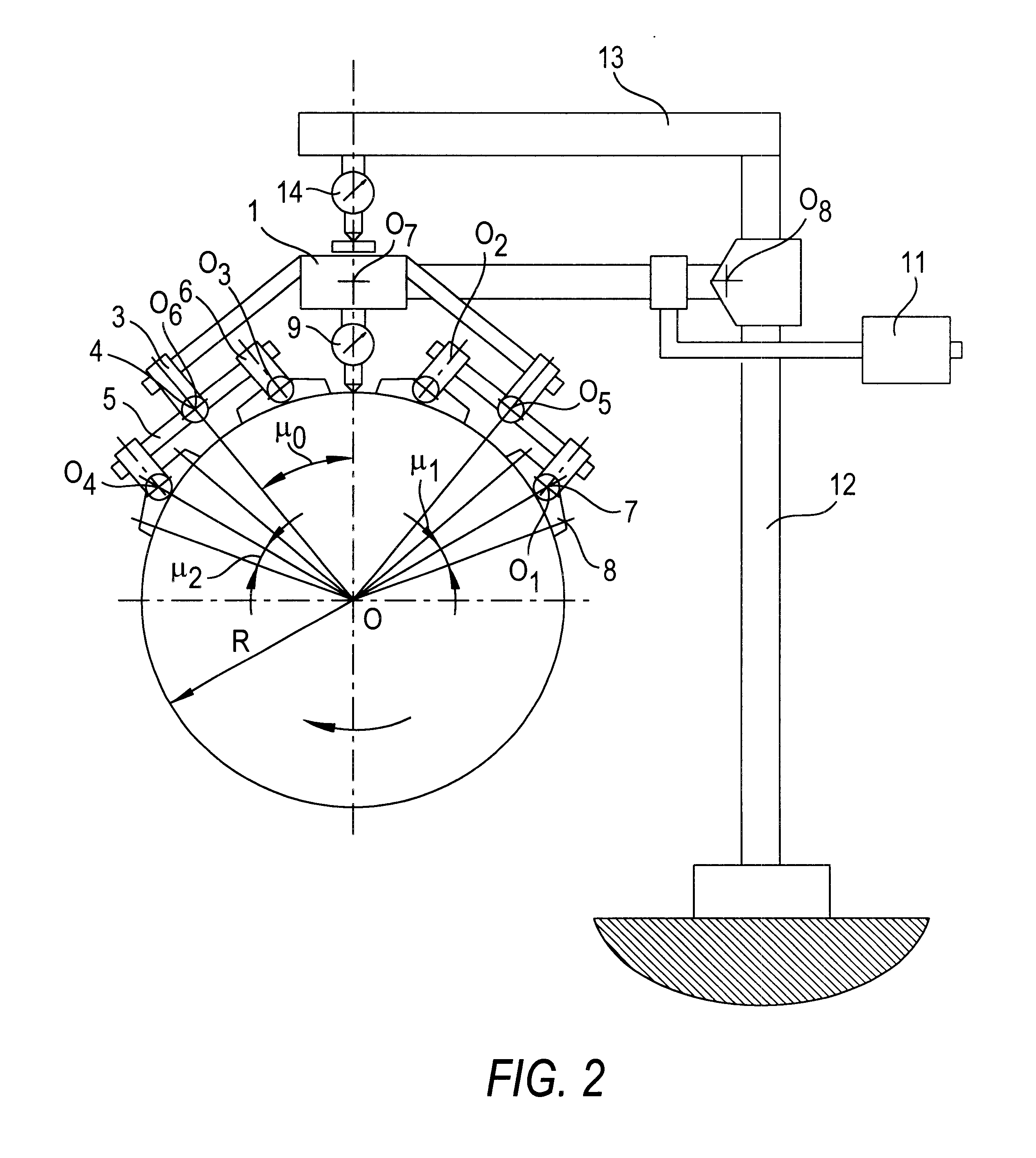Device and method for measuring shape deviations of a cylindrical workpiece and correcting steadying element and correcting follower for use therewith
a technology of cylindrical workpieces and steadying elements, which is applied in the direction of large fixed members, measurement/indication equipments, turning apparatuses, etc., can solve the problems of affecting the accuracy of its measurements, the device is not suitable for use in measuring large workpieces, and the device of this reference also has a major limitation
- Summary
- Abstract
- Description
- Claims
- Application Information
AI Technical Summary
Benefits of technology
Problems solved by technology
Method used
Image
Examples
Embodiment Construction
As a rule, when controlling the shape of a nominally round cylindrical workpiece (hereinafter "workpiece"), a person of skill in the art needs to know not only the value the deviation from cylindricity .DELTA., but also more detailed, very specific geometrical parameters, such as lateral deviations from roundness in cross section; shape in a longitudinal direction (conicity, barrel, etc.), deviation from straightness of the workpiece's main central longitudinal axis; run-out of the surface of the workpiece with respect to a reference surface, such as, for example, a bearing journal.
The following is a detailed description of the nature of deviations in shape of a geometrical form workpiece that are measurable with the device and method of the present invention:
1. Deviation from roundness in cross section of the workpiece, .DELTA.1
.DELTA.1 is the distance from a point on the outer edge of an average ("least squares") circle cross sectional profile of the workpiece, measured at a parti...
PUM
 Login to View More
Login to View More Abstract
Description
Claims
Application Information
 Login to View More
Login to View More - R&D
- Intellectual Property
- Life Sciences
- Materials
- Tech Scout
- Unparalleled Data Quality
- Higher Quality Content
- 60% Fewer Hallucinations
Browse by: Latest US Patents, China's latest patents, Technical Efficacy Thesaurus, Application Domain, Technology Topic, Popular Technical Reports.
© 2025 PatSnap. All rights reserved.Legal|Privacy policy|Modern Slavery Act Transparency Statement|Sitemap|About US| Contact US: help@patsnap.com



